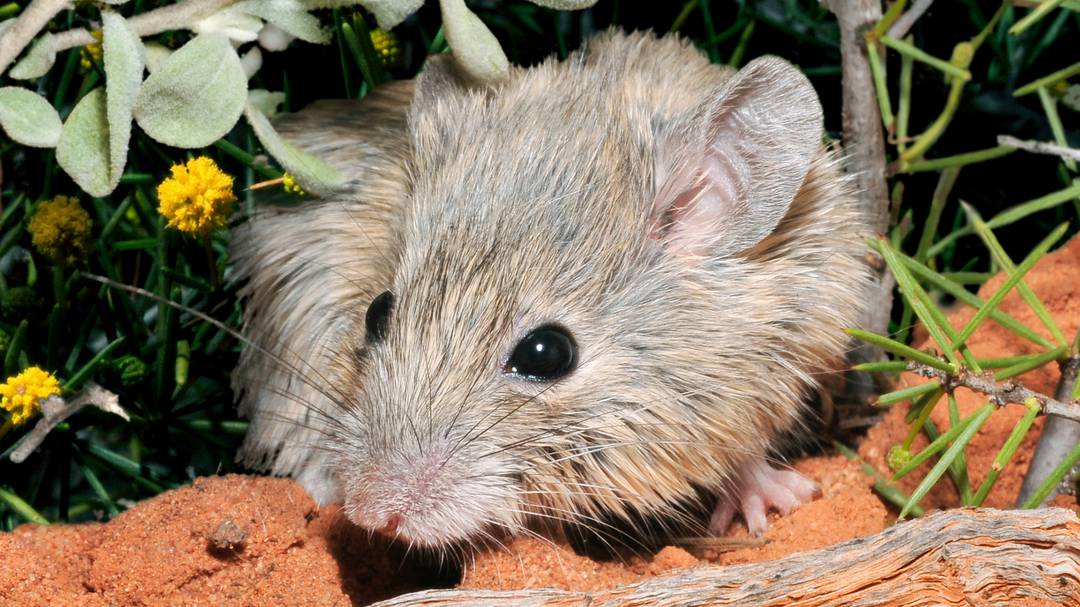Australia. The list of extinct animals in Australia is long. Among them is the Tasmanian tiger or breeding frog, which swallowed its eggs, hatched the young in its stomach, and was eventually born through its mouth. The long list of animal species extinct to date also included the gold rat (false fields), a very cute rodent with gray-brown fur, was last seen in 1857. Since then, the mouse has been considered extinct, although it has been found in large parts of the country – from southwestern Western Australia to New South Wales , the state in the east in which Sydney is located.
The Gold rat, like many other species, has suffered from importation of invasive species such as wild cats and foxes, habitat loss after large areas have been cleared for cultivation, and newly introduced diseases. Climate change and poor fire management have exacerbated conditions once again, especially in the past decades.
escaped on the island
The fact that the mouse has now “rised again” from the dead and that its actual extinction can be prevented is due to a lucky coincidence. Australian researchers compared DNA samples from eight extinct rodents and 42 living relatives and found that the supposedly extinct Gould rat is no different from the Shark Bay rat, also known as the Djoongari, and therefore must be of the same species.
Scientists have discovered that mice still live on Bernier Island, a small island of only 42 square kilometers in Shark Bay in Western Australia. In order to prevent the animals from becoming extinct, researchers have now also moved them to two other islands. The team’s study was published in the scientific journal PNAS.
dramatic demographic collapse
The “revival” of the species is “good news,” said lead author Emily Roycroft, an evolutionary biologist at the Australian National University in Canberra. Rodents have been disproportionately affected by higher mortality since European colonization in 1788. To date, they have made up 41 percent of all extinct mammal species. However, the mouse’s disappearance from the mainland will show how dangerous the animal population collapse is.
Video
Humpback whales for the first time in Australia during ‘Bubble Web Feeding’
Scene in Australia – During their ‘bubble web feeding’, humpback whales blow bubbles from their noses above their heads. © Vanessa Perotta
The rediscovery of the Gold rat is not the only positive news from Australia. In November 2020, Australian researchers made another surprising discovery. It was then that they discovered that the Southern Big Flying Packing Machine was not one type, but actually consisted of three types. This means that two new species of mammals have been added to the list of native animals in Australia. “Australia’s biodiversity is getting richer,” Andrew Krockenberger of James Cook University in Australia said at the time. “Not new mammals are confirmed every day, let alone two new ones,” declared a researcher who published a study on the matter with other authors in the journal Scientific Reports.
Climate change threatens every sixth animal species
But this is where the good news ends. Because Australia has the world’s worst mammal extinction rate: More than 30 land mammals have become extinct in the past 200 years and more than 50 of them are at risk of extinction. This is due to habitat loss, the introduction of animals and agriculture – similar reasons that make life more difficult for the Gold Mouse or the large-scale flying southern pirate. Above all, climate change is playing an increasingly prominent role. According to American ecologist Mark Urban, climate change is now threatening one in six animal species. The scientist came to this conclusion in 2015 after re-analysis of 131 studies. In addition to South America, the flora and fauna of Australia and New Zealand are most endangered, the American wrote at the time.
A year later, Australia reported the first mammal to fall victim to climate change. For example, the young Bramble Cay mosaic rat, which occurred only on Bramble Cay Island in the northernmost Torres Strait of the Great Barrier Reef, died after the low-lying island had been submerged several times in the previous decade due to rising sea levels.
Devastating wildfires in early 2019/20 also killed nearly three billion animals or deprived them of their livelihoods. More than a hundred species of endangered animals have been weakened by the natural disaster.

Communicator. Reader. Hipster-friendly introvert. General zombie specialist. Tv trailblazer

